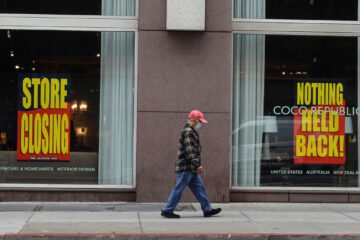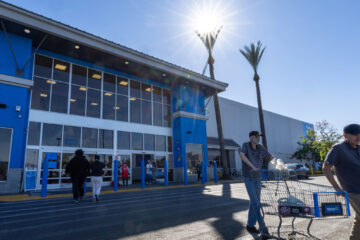It doesn’t matter who you ask, if you went down the line of the top retailers in the U.S., they’d all tell you that business is tough right now.
And it’s been that way for quite a while.
Related: Home Depot quietly makes a change that may enrage customers
Five years ago, at the onset of a new decade, covid struck the U.S. and sent many companies reeling.
Across the country, businesses shuttered in an effort to stop the spread. Foot traffic declined to about zero overnight, and with it, profits declined.
The American Bankruptcy institute estimates that approximately 60% of all businesses in the U.S. closed permanently during covid.
The businesses that reopened after the worst of covid found a difficult new world waiting for them.
Higher interest rates made borrowing money more expensive, which stunted recovery and growth.
A sharp spike in retail theft battered brick and mortar stores across the country and cut into profits.
A shift in consumer behavior put more strain on e-commerce retailers while cutting into physical stores’ profits.
And a massive exit from the retail workforce made it harder to keep stores open and fully staffed.
An aisle at the drugstore Walgreens.
Shutterstock
Retail is still a difficult place to be
Five years on, and many retailers are still struggling to figure things out.
For some, the solution was as straightforward as allocating more resources online and scaling up e-commerce operations.
But that was a slim majority.
There are still plenty of retailers for which the situation was far more delicate and complicated.
More Drugstores:
CVS rips a page out of bankrupt drugstore chain’s playbookCVS planning potentially creepy new store feature
Drugstores, for instance, needed to keep some kind of physical footprint. Their pharmacies are relied on by a large swath of the U.S. population to pick up prescription drugs and access some medical care, like vaccinations or diagnostics.
But many drugstores are easy targets when it comes to theft.
Related: Popular Mexican chain closing all restaurants, no bankruptcy
They’re located in high-foot traffic areas and are often staffed with very few employees.
But locking up inventory isn’t a perfect solution. This prevents many honest customers from buying things and often pushes them toward online providers instead.
Walgreens makes a big change
Walgreens has been especially struggling.
The Illinois-based drugstore has struggled in recent years; a rise in retail theft, dwindling profits, overzealous expansion, changes in consumer behavior, and a ill-fated bet on VillageMD have only compounded Walgreens’ issues.
It’s currently in the process of going private, and is set to shutter hundreds of stores.
But it’s anticipating something of a turnaround.
Related: Bankrupt retail chain gets possible billion-dollar rescue lifeline
Walgreens is actually expanding its small-format locations, also known as micro-fulfillment centers, which use automated systems to process and dispense prescriptions.
These robotic systems help to make business run smoother and faster. It can dispense about 40% of prescription volume at certain stores, which amounts to roughly 16 million monthly.
The system is supposed to save time for the humans that work behind the pharmacy counter. They aren’t intended to replace human pharmacy jobs, however there always remains the risk for job reductions.
Walgreens currently has 11 micro-fulfillment centers across the country but hopes to scale that number up so it can service 5,000 pharmacies by the end of 2025.
Walgreens isn’t the only drugstore betting on small.
CVS revealed earlier in May that it will soon open about one dozen small-format pharmacies, each about 5,000 square feet in size.


